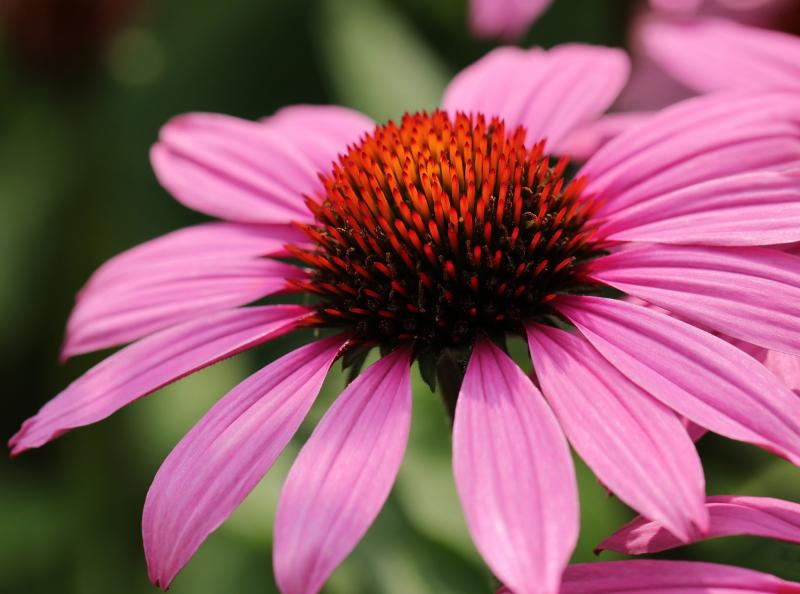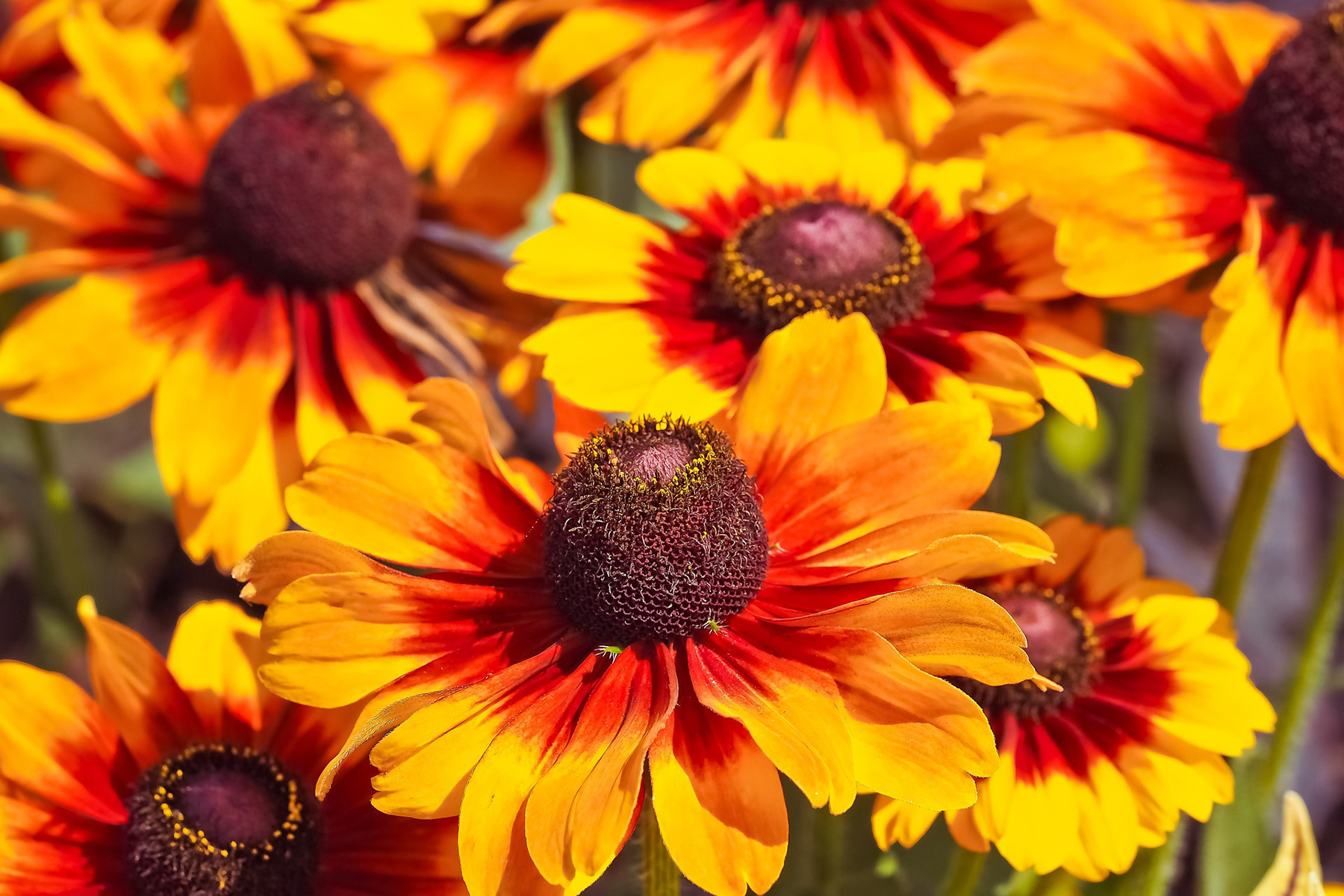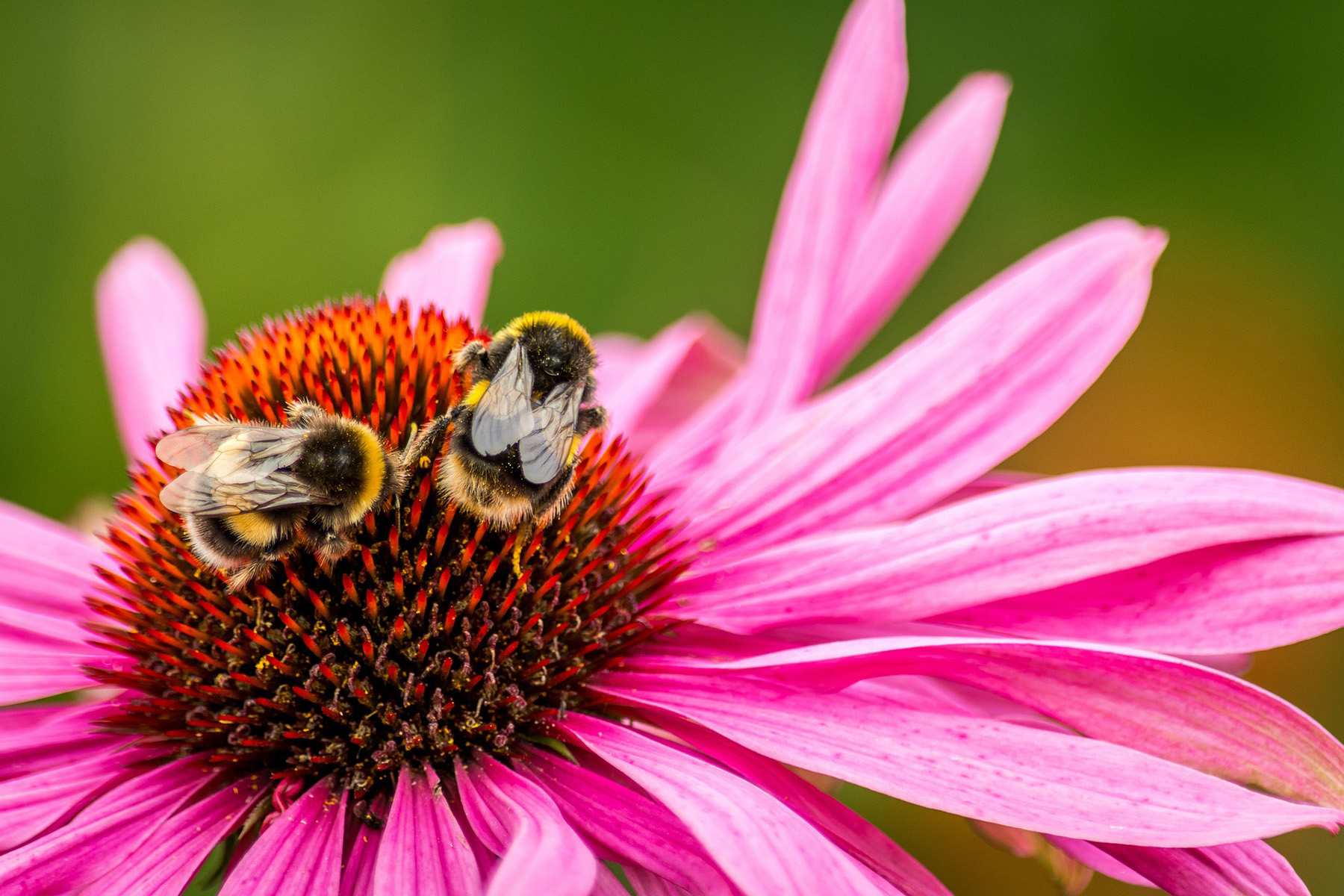
This year the National Garden Bureau promotes as Perennial of the Year Echinacea spp., commonly known as coneflower. The genus Echinacea is comprised of nine species; North American natives that have experienced a boom in popularity the last 25 years. Coneflowers are closely related to plants in the Rudbeckia genus, however Rudbeckias have primarily yellow flowers while purple is the most common color for Echinacea.
 The nine recognized species of coneflower include the following.
The nine recognized species of coneflower include the following.
- E. angustifolia – narrow-leaf purple coneflower. Pink to creamy white drooping petals on 16 to 28 inch plants.
- E. atrorubens – Topeka purple coneflower. Purple, pink or white petals on 18 to 36 inch plants.
- E. laevigata – smooth coneflower. Southeastern native, found in Georgia, Virginia, South Carolina and North Carolina, currently on the endangered species list.
- E. pallida – pale coneflower. Narrow strap-like, pale purple, drooping petals on 18 to 30 inch plants.
- E. paradoxa – yellow coneflower. Pale yellow petals.
- E. purpurea – purple coneflower. Many cultivars are available with a variety of heights and flower colors. One of the "top five" garden center perennials for a home garden.
- E. sanguinea – sanguine purple coneflower. Native to sandy fields, prairies, and open pine woods of south central U.S. Rose pink to pale purple flowers have a purplish-brown central cone.
- E. simulata – wavy-leaf purple coneflower. Narrow strap-like, pale purple drooping petals.
- E. tennesseensis – Tennessee coneflower. Southeastern native with linear leaves on 1 ½ to 2 feet plants with dark mauve upturned ray flowers.
 Coneflowers are daisy-like in appearance, but have a more prominent, spiky, central raised cone surrounded by colorful petals. The petals are actually ray flowers, and are usually purple or white. Plants have alternate, simple and somewhat coarse leaves with petioles that tend to clasp the stems.
Coneflowers are daisy-like in appearance, but have a more prominent, spiky, central raised cone surrounded by colorful petals. The petals are actually ray flowers, and are usually purple or white. Plants have alternate, simple and somewhat coarse leaves with petioles that tend to clasp the stems.
All Echinacea species have a taproot, except for purple coneflower, which has a fibrous root system. Plants are herbaceous perennials, meaning the foliage dies each fall and plants regrow from the crown in spring. Plants are heat and drought tolerant, performing best in full sun. They prefer loamy, well-drained soil, and very adaptable to a wide range of soil pH levels.
 Uses
Uses
Coneflowers are attractive to birds, bees and butterflies, making them a great addition to a butterfly garden. Plants are usually deer resistant, too. They are a great addition to a perennial garden, prairie planting, or wildflower garden, and also work well in containers.
Cultivars
A tremendous amount of work has been done in development of new coneflower cultivars, resulting in many new introductions each year. Two great cultivars include 'Cheyenne Spirit' and 'Pow Wow Wild Berry'. 'Cheyenne Spirit' was an All-America Selection (AAS) winner in 2013. Plants bloom the first year in a delightful mix of flower colors from rich purple, pink, red and orange tones to lighter yellows, creams and white. AAS 2010 winner, 'Pow Wow Wild Berry' features vivid deep rose-purple flowers on 10 to 24 inch plants.
Pests
Unfortunately, coneflowers are susceptible to one serious pest. Aster yellows is a virus-like disease with a very wide host range, including coneflowers. It's spread through the feeding of leafhoppers on susceptible plants. Symptoms include stunting, stiff bushy growth, foliage yellowing and flower deformations. There is no cure for infected plants, so plant removal is important as soon as symptoms are seen to prevent spread.
For more information on this year's featured plants, visit the National Garden Bureau.
Images by Pixabay.com